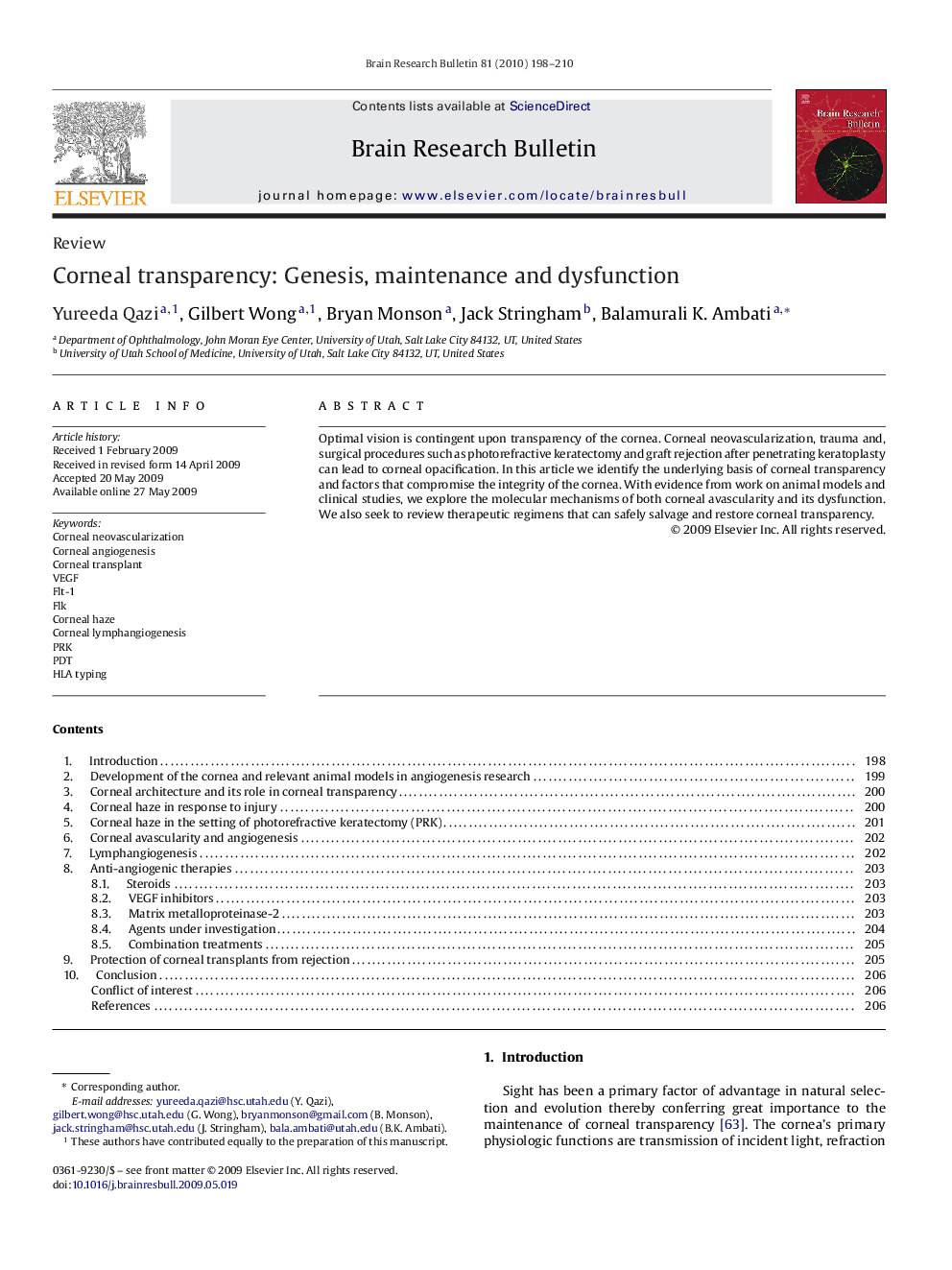| Article ID | Journal | Published Year | Pages | File Type |
|---|---|---|---|---|
| 4319362 | Brain Research Bulletin | 2010 | 13 Pages |
Abstract
Optimal vision is contingent upon transparency of the cornea. Corneal neovascularization, trauma and, surgical procedures such as photorefractive keratectomy and graft rejection after penetrating keratoplasty can lead to corneal opacification. In this article we identify the underlying basis of corneal transparency and factors that compromise the integrity of the cornea. With evidence from work on animal models and clinical studies, we explore the molecular mechanisms of both corneal avascularity and its dysfunction. We also seek to review therapeutic regimens that can safely salvage and restore corneal transparency.
Keywords
Related Topics
Life Sciences
Neuroscience
Cellular and Molecular Neuroscience
Authors
Yureeda Qazi, Gilbert Wong, Bryan Monson, Jack Stringham, Balamurali K. Ambati,
